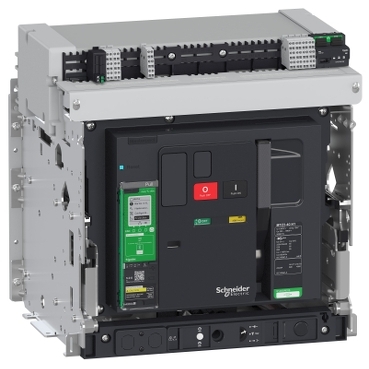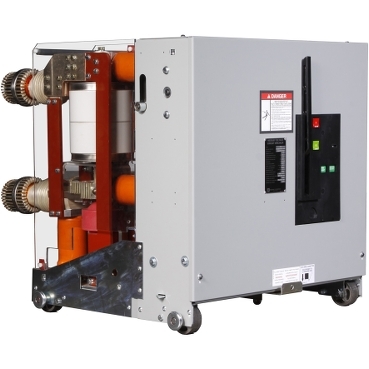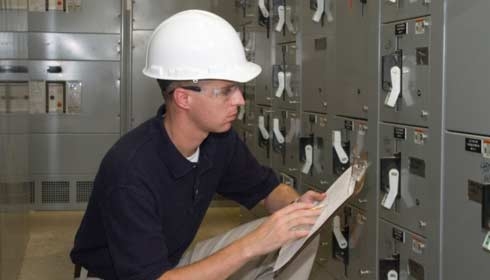SUMMARY: Circuit breakers are the guardians of your electrical system. Learn how they work, the different types available, and their key components. We'll also address common questions and safety tips for using circuit breakers effectively.
Types of circuit breakers
Circuit breakers come in various flavors, each tailored for specific purposes. Here are the most common types:
- Miniature Circuit Breakers (MCBs): These are the most common type found in homes. They protect your electrical circuits from overloads and short circuits. MCBs are equipped with two tripping mechanisms: the delayed thermal tripping mechanism for overload protection and the magnetic tripping mechanism for short circuit protection.
- Molded Case Circuit Breakers (MCCBs): Used in industrial settings, MCCBs handle higher currents and offer more robust protection. When selecting a circuit breaker, consider factors such as current ratings and trip characteristics to ensure it meets your specific needs.
- Residual Current Circuit Breakers (RCCBs): These protect against electrical leakage and are crucial for safety in wet environments like bathrooms.
- Air Circuit Breakers (ACBs): Typically used in large facilities and industries, ACBs can handle very high currents and offer advanced protection features. They are the best choice for heavy switching, and their contacts are replaceable.
Key components of a circuit breaker
Understanding the key components of a circuit breaker will help you grasp its inner workings better:
- Switch: This is the part you flip to turn the circuit breaker on or off. It's like the on/off button of your electrical system.
- Trip Mechanism: This is the brain of the circuit breaker. It detects abnormal currents and triggers the switch to turn off the power.
- Contacts: These are like the hands that grab or release the electrical flow. When the circuit breaker trips, the contacts separate to stop the electricity. The contacts allow the current to flow through the circuit breaker when closed, and are designed to protect against overcurrent and short circuits.
- Arc Extinguisher: When the circuit is interrupted, it can create a spark (arc). This chamber extinguishes the arc (when the contacts open), preventing fires.
- Frame: The outer protective and supportive case of most breakers. It shelters the other components of the breaker, providing insulation. Some frames are molded and made from glass-polyester or plastic. Some use metal frames.
The differences between circuit breakers, fuses, and disconnects
Circuit Breakers vs. Fuses
Circuit breakers may sound similar in function to another electrical component called a fuse, but the two are different. Both are designed to stop an electrical current when something goes wrong, but there’s a key difference: a breaker is reusable while a fuse can only be used once. A fuse is a glass cylinder with a thin filament that will melt when tripped. Once the filament has been burned, the fuse needs to be replaced. Since they can be reused, breakers are much more common, but fuses can still be found in a few niche appliances.
Circuit Breaker vs. Disconnects
Circuit breakers and disconnects can actually be used interchangeably, but they typically address different problems. A disconnect is a switch that can be used to turn off a current. Disconnects are often used in the industrial and commercial sectors while a breaker is more universally used.
Circuit breaker FAQs and safety tips
Let's address some common questions about circuit breakers and safety tips for using them effectively:
- How do I choose the right circuit breaker for my needs?
When selecting a circuit breaker, consider factors such as current ratings, trip characteristics, and specific applications to ensure it meets your requirements.
- What are the signs that my circuit breaker needs maintenance or replacement?
Be vigilant for signs of a faulty circuit breaker, such as frequent tripping, buzzing sounds, or overheating. If you notice these signs, consult a qualified electrician for maintenance or replacement.
- Can circuit breakers protect against electrical fires?
Yes, circuit breakers play a role in fire prevention by interrupting current flow during faults, helping to prevent electrical fires.
- What is the difference between a circuit breaker and a surge protector?
While circuit breakers protect against overloads and short circuits, surge protectors safeguard against voltage spikes. Both serve different purposes and can complement each other in electrical safety.
- Are there any safety tips for using circuit breakers?
If your circuit breaker needs to be replaced, it is always best to hire a professional electrician for the job. When resetting a tripped circuit breaker, always turn off the power before doing so to avoid electrical hazards. Follow proper safety practices when working with electrical equipment.










